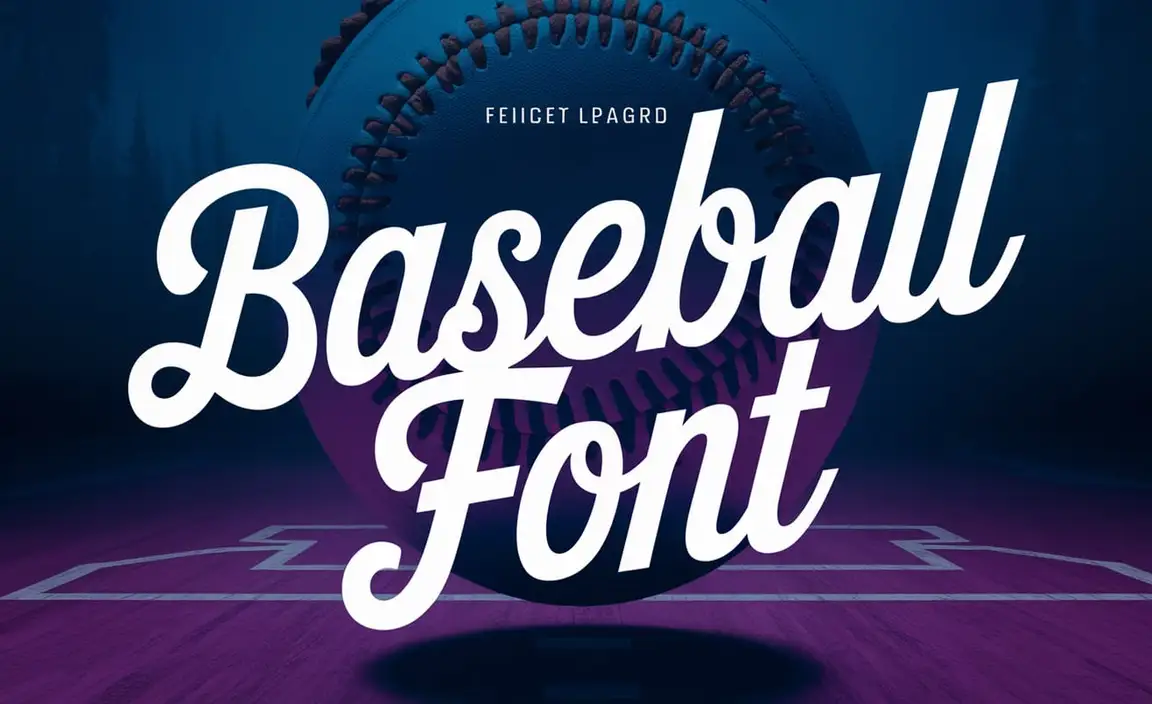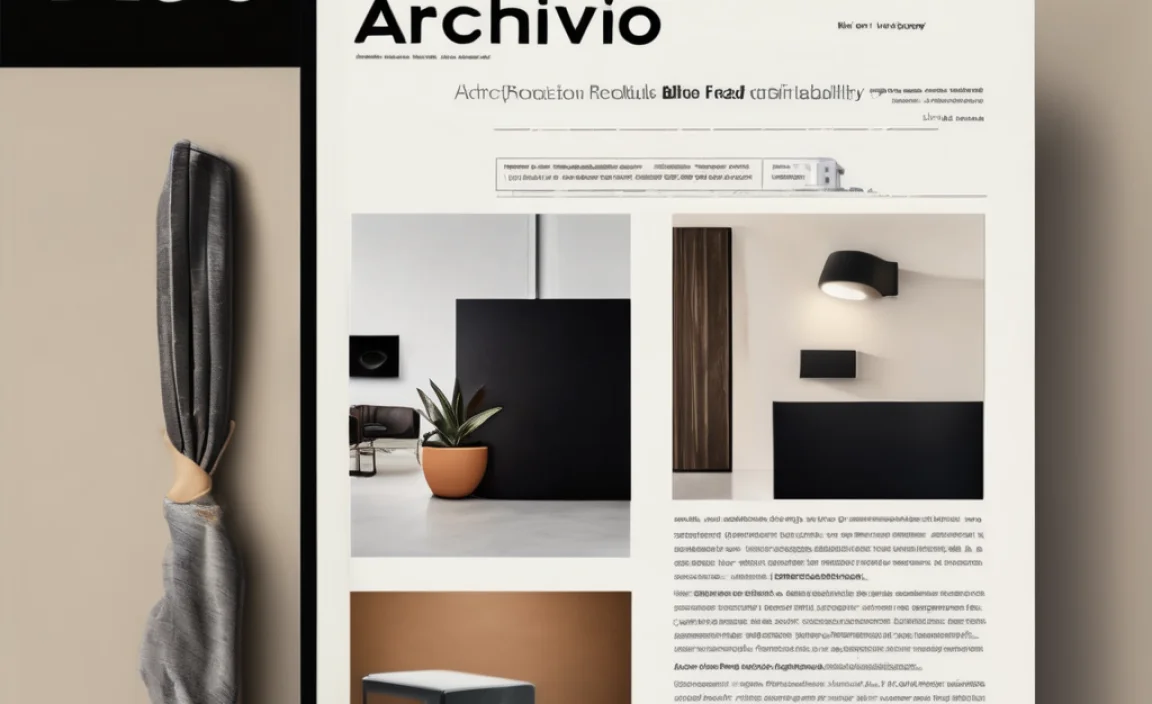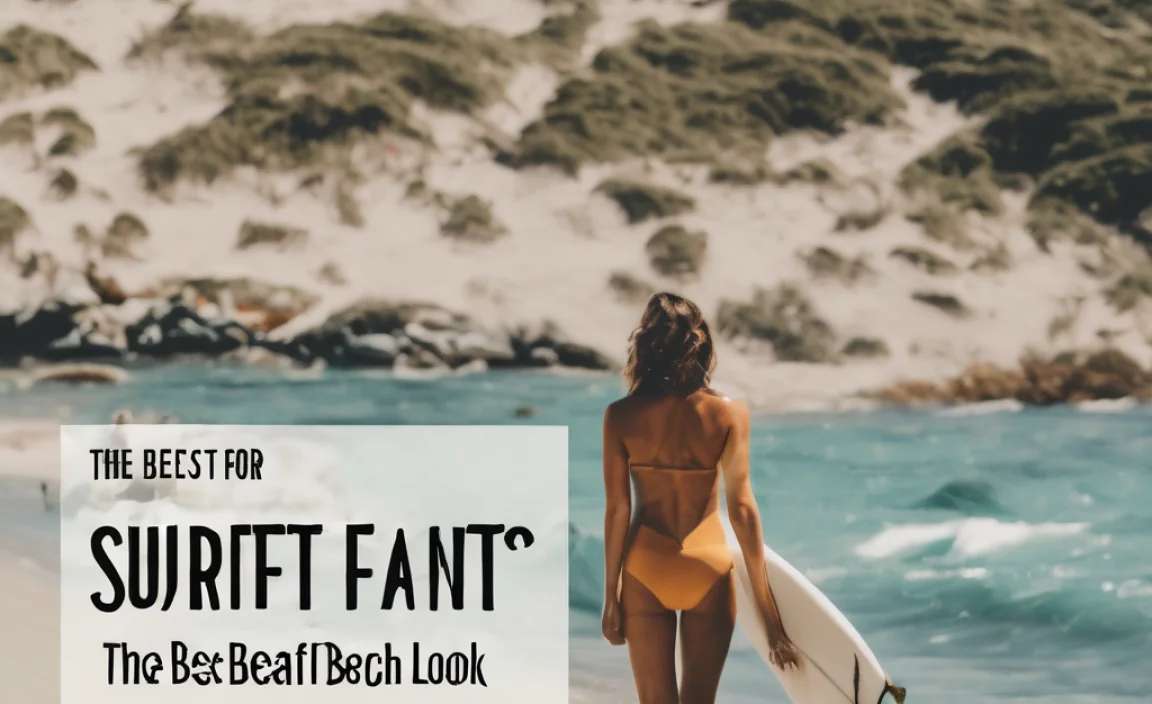Pierce the Veil Font: Essential Guide
The Pierce the Veil font, often recognized for its striking boldness and unique character, is a popular choice for designs seeking an impactful and memorable aesthetic. This guide will help you understand its origins, versatile applications, and how to effectively use it in your creative projects.
—
Welcome to FontAxis! Today, we’re diving into a font that has a certain mystique – the Pierce the Veil font. Ever spotted a design that just pops with an undeniable edge, and wondered what font it is? You might have been looking at a font similar to the Pierce the Veil style. It’s a font that can bring a powerful punch to your projects, but knowing how to wield it is key. If you’ve ever felt a little lost when it comes to picking the perfect font, you’re in the right place. We’re going to break down this distinctive typeface, exploring what makes it special and how you can use it to elevate your own designs. Get ready to unlock the secrets of the Pierce the Veil font – your design will thank you!
—
What is the “Pierce the Veil” Font?
The “Pierce the Veil” font isn’t a single, officially registered typeface with that exact name in major font foundries. Instead, it commonly refers to a style of font characterized by its bold, often slightly distressed, and somewhat gothic or grunge-inspired aesthetic. This style is frequently associated with the band Pierce the Veil and has become a recognizable visual element tied to their branding and merchandise. When people search for the “Pierce the Veil font,” they are usually looking for fonts that capture this specific energetic, rebellious, and visually impactful feel.
Think of it less as a specific font file and more as a font archetype. It’s a font that embodies a certain attitude: a blend of raw energy, a touch of darkness, and a strong visual presence. This type of font is highly effective for designs that need to stand out, convey a sense of urgency, or appeal to a younger, more alternative demographic. Its distinctive style makes it a magnet for attention, making it a go-to for album art, event posters, merchandise, and anywhere a bold statement is needed.
Understanding the Visual Characteristics
The visual DNA of typefaces that fall under the “Pierce the Veil font” umbrella is quite distinct. These fonts often share several key characteristics that give them their unique identity. Identifying these traits will help you find similar fonts or understand why a particular typeface evokes that specific feel.
Key Design Elements
Bold Weight: These fonts are almost always heavy and substantial. This ensures they have a commanding presence and are easily legible even at smaller sizes, or when used in high-contrast environments.
Distressed or Textured Qualities: A common feature is a deliberate imperfection. This can manifest as rough edges, ink bleeds, subtle scuffs, or a gritty texture. This adds a layer of authenticity and a handmade feel, reminiscent of old concert flyers or zines.
Sharp Angles or Jagged Edges: While not always present, some fonts in this style incorporate sharp, angular terminals or strokes. This can contribute to a more aggressive or edgy look.
Gothic or Blackletter Influences: You might notice subtle nods to traditional Gothic or Blackletter scripts, particularly in the more ornate or dramatic examples. This adds a historic, yet dark, gravitas.
High Contrast (Implied): While the weight is bold, there can be an implied contrast between thick and thin strokes that, combined with distressing, creates a dynamic effect.
Unique Ligatures or Alternate Characters: Some fonts in this vein might offer special characters or ligatures that add further customisation and a distinct flair, enhancing their unique appeal.
These elements combine to create a font that is not just a collection of letters, but a statement piece. It communicates energy, passion, and a refusal to blend in.
Why is Finding the “Pierce the Veil Font” Challenging?
As mentioned, there isn’t one single font officially named and sold as “Pierce the Veil Font.” This is the primary reason why searching for it can feel like a treasure hunt. When the band uses a specific typeface for their album covers, merchandise, or promotional materials, it often becomes associated with them, and fans and designers alike will try to replicate that look.
This leads to a few common scenarios:
Custom-Designed Lettering: The exact “Pierce the Veil” look might be custom-designed artwork or hand-lettering for a specific project, meaning it’s not commercially available as a font file.
Misidentification: A popular, commercially available font might be mistaken for the “Pierce the Veil font” because it shares similar visual characteristics. Designers often look for close matches to achieve a similar vibe.
Obscure or Niche Fonts: The font used might be from a smaller foundry or an older, less common typeface that is harder to find through standard searches.
Licensing Restrictions: Even if a font is identified, its licensing might be restrictive, or it might not be available for general public use.
The good news? While the exact font may be elusive, the style is very much achievable. The real skill lies in understanding the aesthetic and finding fonts that embody its spirit.
Where to Find Fonts in the “Pierce the Veil” Style
Since a direct hit can be tricky, the best approach is to explore font marketplaces and libraries for fonts that share the key characteristics we discussed. Think bold, grunge, distressed, or even modernized blackletter styles. Here are some popular platforms and types of fonts to look for:
Font Marketplaces and Resources
Google Fonts: A fantastic free resource. Search terms like “display,” “bold,” “heavy,” or “grunge” might yield interesting results. While it leans towards more readable styles, you can still find impactful display fonts.
Adobe Fonts: If you have an Adobe Creative Cloud subscription, you get access to a vast library. Explore their display and sans-serif categories, again using keywords like “impact,” “rough,” “distressed,” or “heavy.”
MyFonts: One of the largest commercial font marketplaces. This is where you’re likely to find more niche and highly stylized fonts. Use their advanced search filters for weight, style, and even texture.
FontSquirrel: Another excellent source for high-quality free fonts for commercial use. Their classifications can help you narrow down options.
Creative Market / Envato Elements: These platforms often feature unique, independent font releases. You’ll find many display fonts with strong character and texture here.
Font Styles to Search For
When browsing these sites, keep an eye out for fonts categorized as:
Display Fonts: These are designed for headlines and short bursts of text, prioritizing impact over extensive readability.
Grunge Fonts: Explicitly designed to have a distressed, worn, or gritty texture.
Stencil Fonts: Often have cut-outs, offering a bold, industrial feel that can sometimes align with this aesthetic.
Modern Blackletter/Gothic: These update traditional blackletter styles with a more contemporary feel, often incorporating boldness and unique flourishes.
Slab Serifs (Bold Variants): While not always distressed, very bold slab serifs can have a strong, impactful presence that works well for headlines.
Tip: Look at the band’s official artwork. Sometimes, you can use font identification tools (like WhatTheFont by MyFonts) by uploading an image, which can give you clues about the font they used or suggest very similar alternatives.
Practical Applications: Using the “Pierce the Veil” Font Style
The power of a font like the “Pierce the Veil” style lies in its ability to command attention. It’s not a background font; it’s a statement font. Knowing where and how to use it effectively will make your designs sing.
Industries and Projects Where It Shines
Music Industry: Album art, band logos, concert posters, merchandise t-shirts, social media graphics for alternative/rock/metal bands. The raw energy matches the music.
Event Promotion: Flyers and posters for concerts, festivals, extreme sports events, or any event with a rebellious or high-energy theme.
Fashion & Apparel: Branded t-shirts, hoodies, caps, stickers, especially for streetwear, skate brands, or alternative fashion lines.
Branding for Edgy Businesses: Think tattoo parlors, bike shops, alternative cafes, or any business wanting to project a cool, independent, and slightly daring image.
Editorial Design: Headlines in magazines catering to youth culture, music, or subcultures.
Personal Projects: To add a unique flair to social media posts, personal blogs, or creative artwork.
Tips for Effective Usage
1. Use Sparingly: This is a font meant for impact, not for extensive paragraphs. Reserve it for headlines, titles, logos, or key call-to-actions. Long blocks of text in such a bold, potentially distressed font will be difficult to read and can appear overwhelming.
Best for: Titles, Subtitles, Logos, CTAs, Short Accents.
Avoid for: Body text, long descriptions, disclaimers.
2. Pair Wisely: Because of its strong personality, the “Pierce the Veil” style font needs a supportive cast. Pair it with a clean, highly readable sans-serif or serif font for body copy. This contrast will make both fonts stand out.
Headline: Bold, distressed font (e.g., “Pierce the Veil” style)
Body Text: Simple, clean sans-serif (e.g., Open Sans, Roboto) or a legible serif (e.g., Merriweather, Lora).
3. Consider the Background: The texture and darkness of these fonts mean they need good contrast to be legible. Ensure your background isn’t too busy or too dark if the font is also dark. White or lighter backgrounds often work best for dark, distressed fonts.
4. Color Choices: Experiment with colors that match the mood. Muted tones, deep reds, blacks, whites, and grays often complement this style. For a more vibrant effect, consider a bright accent color against a dark distressed font.
5. Context is Key: Always ask yourself: Does this font style align with the overall message and tone of my brand or project? Using it where it doesn’t fit can look out of place.
Comparing Font Styles: Where “Pierce the Veil” Fits In
Understanding how the “Pierce the Veil” font style fits into the broader typography landscape can demystify its use. Typefaces are often categorized by their design: serif, sans-serif, script, and display. The “Pierce the Veil” style typically falls under the Display category, often with Grunge or Distressed characteristics.
Let’s break down the common font categories and see where this style plays:
Serif Fonts: Have small decorative strokes (serifs) at the ends of the main strokes of letters. Think of classic fonts like Times New Roman. They generally convey tradition, formality, and readability for long texts.
Example: Georgia, Garamond.
Sans-Serif Fonts: Lack these decorative strokes. They are often perceived as modern, clean, and highly readable, especially on screens.
Example: Arial, Helvetica, Lato.
Script Fonts: Mimic handwriting or calligraphy. They can range from elegant and formal to casual and playful. They are best used sparingly for decorative purposes.
Example: Pacifico, Great Vibes.
Display Fonts: These are designed for impact and to grab attention. They often have unique, decorative, or unconventional designs. They are ideal for headings, titles, logos, and short text where readability over long stretches is not the primary concern. The “Pierce the Veil” style is a prime example of a display font archetype.
Example: Impact, Bebas Neue (bold sans-serif used for impact), and fonts with grunge/distressed textures.
The “Pierce the Veil” font style is a sub-genre of Display fonts. It borrows traits that make it stand out, like bold weights and textured finishes, which are hallmarks of display typography. Its strength is in its personality and its ability to evoke emotion and add a strong visual identity, rather than its suitability for crafting long narratives.
| Font Category | Key Characteristics | Typical Use | “Pierce the Veil” Style Fit |
|---|---|---|---|
| Serif | Has serifs; often traditional, classic | Body text, books, formal documents | Rarely |
| Sans-Serif | No serifs; clean, modern | Websites, UI, headlines, body text | As a pairing font for body text |
| Script | Mimics handwriting/calligraphy; flowing | Invitations, logos, decorative accents | Rarely (unless graffiti-style script) |
| Display | Bold, decorative, unique, attention-grabbing | Headlines, posters, logos, short text | Primary Category |
Finding Fonts with Similar Characteristics (Examples)
To help you on your quest, here are some font names and categories that capture the spirit of the “Pierce the Veil” style. Remember, the exact font might be proprietary or custom, so these are excellent alternatives that deliver a similar impact.
Types of Fonts to Explore:
Distressed Sans-Serifs: These carry boldness and often have a grunge or rough texture applied.
Examples: Often found with names like “Rough,” “Grunge,” “Distressed,” “Urban.” Search for these on font marketplaces.
Heavy Slab Serifs with Character: Some bold slab serifs can have a strong, almost industrial feel that works well.
Examples: Some variations of “Rockwell” or independent slab serifs with sharp edges.
Modern Gothic/Blackletter Interpretations: Fonts that update these historic styles with contemporary boldness can be very effective.
Examples: Fonts described as “Modern Blackletter,” “Neo-Gothic,” or “Urban Gothic.”
Hand-Drawn Display Fonts with Edge: Some hand-drawn fonts have a raw, energetic quality that aligns with the “Pierce the Veil” aesthetic.
Let’s look at a few specific examples, keeping in mind that availability and licensing vary. These are styles* to search for:
Example Style Pool:
| Font Name/Style Concept | Where to Look | Key Features |
| :———————- | :————————————————– | :——————————————————————————– |
| Urban Grunge Sans | MyFonts, Creative Market, FontSquirrel | Bold weight, rough texture, distressed edges, modern sans-serif structure |
| Industrial Stencil | FontBundles, Adobe Fonts | Bold forms, sharp cut-outs (stencils), edgy, often sans-serif |
| Ripped/Torn Effect | Envato Elements, Independent Font Foundries | Appears as if letterforms themselves are torn or distressed with fine detail |
| Neo-Gothic Display | MyFonts, Commercial Font Marketplaces | Bold lettering, hints of gothic structure, sharp angles, impactful |
| Aggressive Slab Serif| Creative Market, MyFonts | Very thick slabs, bold structure, often with sharp terminals or a worn texture |
When searching, use keywords like: “bold display font,” “grunge font,” “distressed font,” “heavy sans serif,” “rock font,” “aggressive font,” “stencil font,” or “urban font.”
You can even use online tools that help identify fonts from images. If you find a design that uses a font you love, you can upload the image to services like WhatTheFont or Fontspring’s Font Identifier. They’ll analyze the image and suggest the closest matches available for download or purchase. This is an invaluable technique for designers.
Best Practices for Readability and Accessibility
While the “Pierce the Veil” font style is fantastic for impact, it’s crucial to remember readability and accessibility, especially if you’re using it in any context where information needs to be clearly conveyed. Over-reliance on highly stylized or distressed fonts can hinder comprehension.









